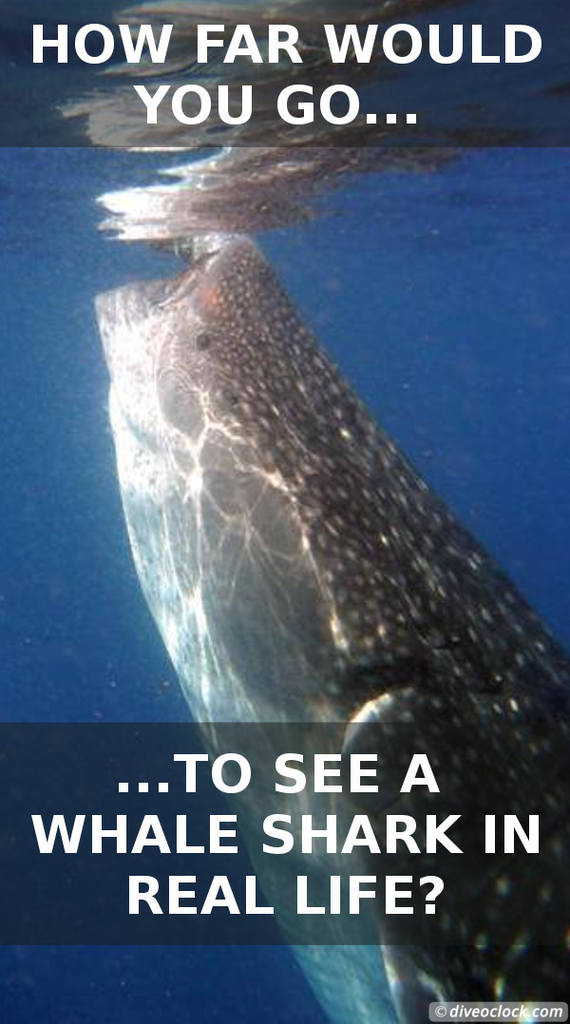How Far Would You Go to See a Whale Shark in Real Life?
We partnered up with Whale Shark Diaries to explain you all about whale shark tourism through the eyes of a marine biologist! 12 steps to choosing a responsible operator, good and bad examples and why choosing a responsible company is vital for the future.
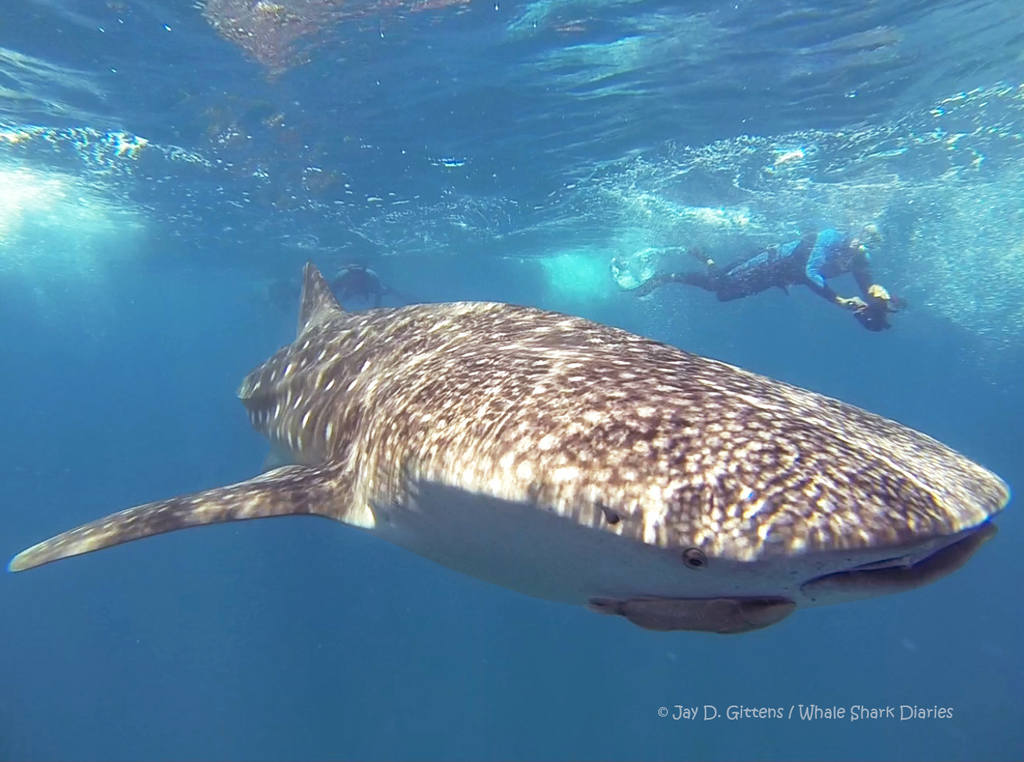
Whale shark encounter!
Seeing a whale shark for the first time is really breathtaking, especially underwater you get an experience you will never forget. There is no reason to be scared about seeing a whale shark but there are reasons why we should protect them from 'us'.
World Oceans Day 2017
World Oceans day is a special day to think and act about conservation, climate change and what we can do about it. This year Dive O'Clock partners up with Whale Shark Diaries to raise awareness for their whale shark trips and internships in Mexico. Their goal is to educate local communities, tourists and students in whale sharks behaviour and conservation. With this blog post we zoom in on whale shark tourism. This animal is high on SCUBA divers 'wish lists' but whale sharks sometimes pay the price...
Good and Bad Examples of Whale Shark Tourism
Luckily the government of some countries understand the value of living whale sharks for the economy. They are worth more alive than dead and it is important to keep the conditions right so the sharks come back the next year. In Isla Mujeres the whale shark trips are 100% responsible partly because of high regulations. Unfortunately that is not the case everywhere.In our eager and enthusiasm we sometimes do things that are in our favour but not necessary for the whale sharks. Being aware of what might happen if you touch a whale shark is an easy example. If you stroke a shark or just put your hands on his skin for a photo you risk damaging the protective mucus layer which protects a shark against parasites and bacterial infections. While bumping in to boats and moving propellers might be a pretty straight forward bad thing their skin is also vulnerable. It is common knowledge that around 60% of the whale sharks in La Paz bay have visible boat-caused scarring according to Jay. Read more about The Risks of Touching Marine Life.
Unfortunately it does not stop there, there are photos of people kicking or pushing a shark away from boats.
Boats sometimes bump in to whale sharks and the other way around. Often whale shark have propeller cuts or deep 'unnatural' scars. Keeping a good distance between a boat and a whale shark is essential. The same thing goes for the people in the water. Even-though you do not want to (accidentally) touch a whale shark you do not want to chase him away either.
Luckily some countries provide laws and tour operators follow local regulations although following-up to them might be the hardest part. While shark tourism and conservation luckily go hand in hand in most places nowadays. In Mexico, Isla Muyeres, there is even a declared whale shark sanctuary. Have a look at their rules here.
Still there are some controversial places where long term goals seem to be out of sight. Of all the places in the world whale shark trip in Oslob (Cebu, Philippines) probably the most controversial. Although the whale sharks are protected by Philippine law and harassment is illegal there seems to be no follow-up in bad behaviour by companies and participants. Touching, kicking and even feeding is happening in Oslob. By feeding whale sharks, you lure the whale shark to the boat, to people, to eat. This is unnatural behaviour. Also they do not get fed the right (balanced) diet which can lead to health problems for example.
The risks of directly hurting a whale shark is high but changes in behaviour have been monitored as those are worse. By now the whale sharks start approaching boats for some free food even before anything is in the water. The organization LAMAVE spent over 6200 hours in Oslob to research those behavioural changes.
Read more here: Feeding the world's largest fish: highly variable whale shark residency patterns at a provisioning site in the Philippines
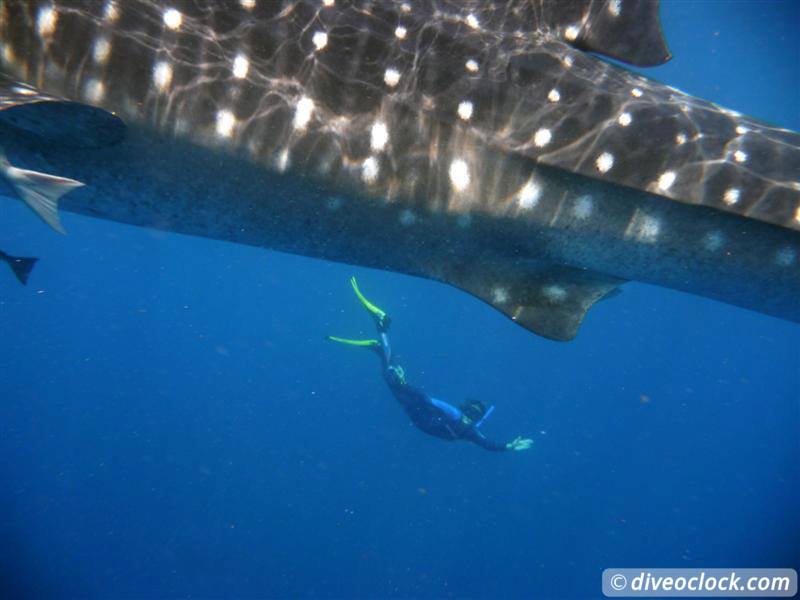
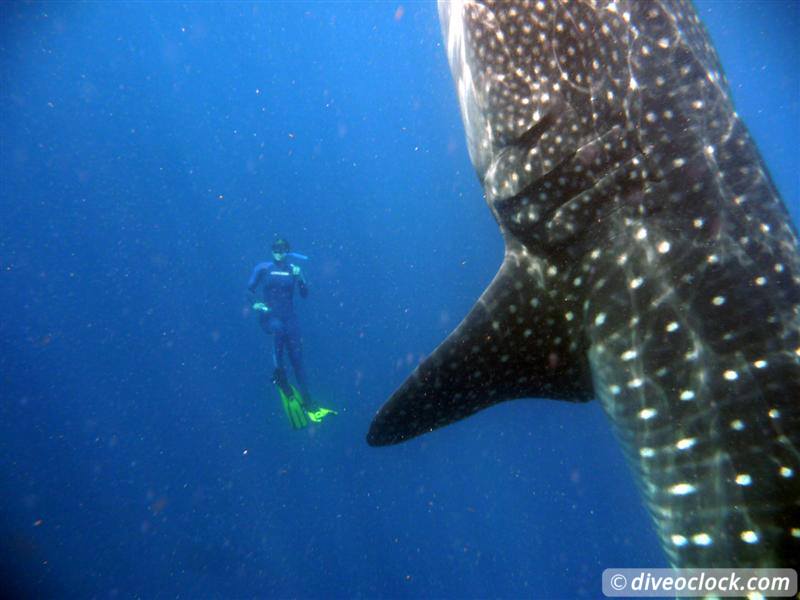
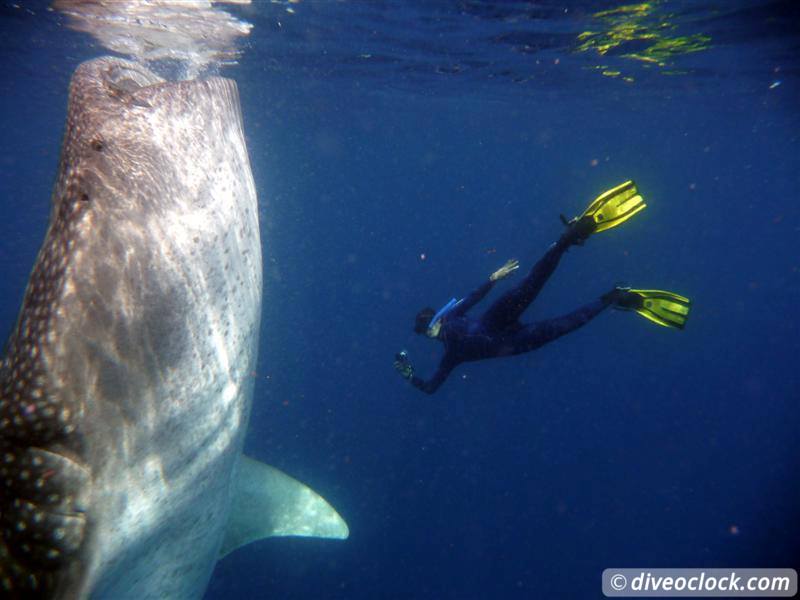
My Whale Shark encounter at Isla Mujeres in Mexico!
12 Steps to Choosing a Responsible Whale Shark Tourism Operator
Since the whale shark, Rhincodon typus, is an endangered species [IUCN, 2016], it is vitally important to choose a responsible, licensed tour operator if you want to interact with these threatened animals. Whilst wildlife tourism in general has been shown to offer a non-extractive alternative livelihood to extractive fishing practices, in some cases detrimental impacts to the target species has been documented.- First read up about the area in which you want to interact with whale sharks. Ensure that you are satisfied with the local whale shark tourism industry. This is because as an example in some locations the whale sharks are fed which interferes with their natural diet, foraging behaviour and migratory movements.
- Ensure you know the conservation status of the species. As stated above, the whale shark is endangered.
- Ask your friends and social media contacts if they can recommend a whale shark tour provider. Word of mouth recommendations are usually the best way to go. There are many Facebook groups and pages such as MarineBio.org and Scuba Diving that will most probably have members that have swam with whale sharks in your chosen destination. Consider their opinions but do you own checks as well. Ensure you only deal with operators that have a permit to take you to see the whale sharks.
- Once you have the names of several licensed whale shark tourism operators, look at their websites and social media pages and of course look for customer reviews. Not everyone is on TripAdvisor and this isn’t necessarily a bad thing. Maybe they use another platform such as their Facebook page for their customers’ reviews. Check these reviews carefully but don’t necessarily be put off by that one negative review from the “person” who was impossible to please unless of course what they describe are acts that may have had a detrimental impact on the whale sharks. Use the reviews to narrow your list down to two or three providers.
- Contact your short-list of providers. The way in which they respond to you will influence your final decision. Were they prompt in their replies? Friendly? Informative? Ask about the boat and most certainly ask about group sizes. By the time you exchange a few emails you will most likely have warmed to a particular provider.
- When you go on the trip itself, check that you are happy with the condition of the boat and crew and that they have a permit. This is sometimes in the form of a flag. If you don’t see it, ASK. Do not become part of a wildlife tourism problem.
- If the guide hasn’t already explained the rules and regulations to you then ask what they are. Most reputable businesses will give a boat briefing, explain the rules of interaction and give you some information about the biology of the species. If they don’t then again, ASK.
- Follow all the rules explained to you. Be considerate about others on your boat. Maybe another guest needs assistance to get a good look at a whale shark and perhaps you find yourself better placed to help them. Always look out for your fellow tourism participants and help each other to get the most from the trip.
- If you are happy with the service it is polite to tip. The amount you should tip will vary from place to place. You can maybe ask around in advance.
- Be aware that in some cases the people that have some of the most amazing experiences with creatures in the marine environment have earned it through spending much time in the water. The more times you go, the more experiences you will have.
- Leave an honest review. Base the review on the service and information you received, not on how many whale sharks you saw. Whale sharks are of course wild animals and they will do what they please and go where they want and no operator can influence that. If you happen to have the experience of a lifetime then that is great but don’t forget to consider the service you received.
- Finally, share your experience with the people in your circles. Wildlife tourism is a fantastic tool in raising awareness about the marine environment and threatened marine species.
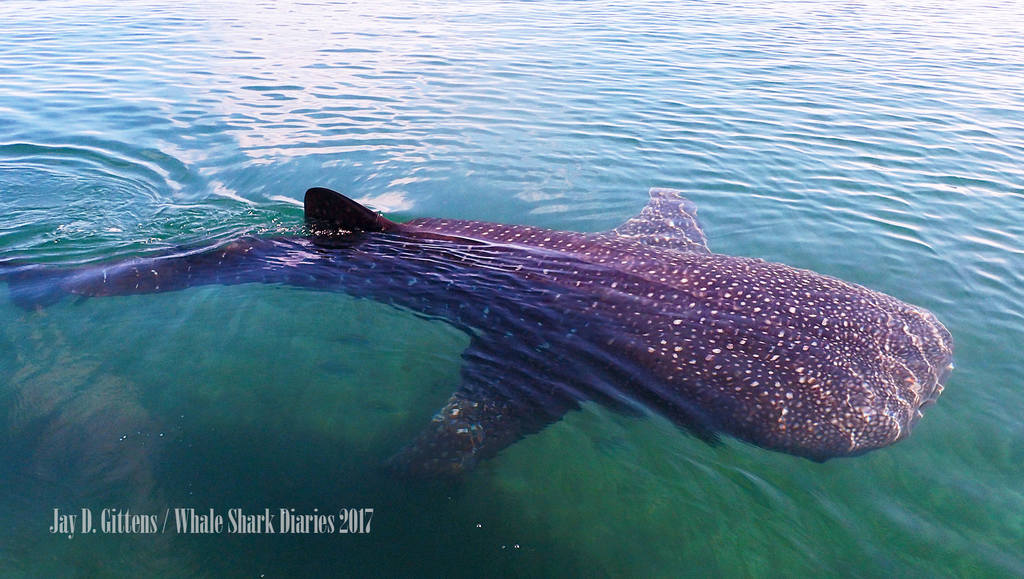
Whale Shark Diaries

Whale shark encounter trips
With Whale Shark Diaries you can swim with whale sharks in a responsible way. Maybe the best part is that a marine biologist will join the trip, and you can ask as many questions as you wish! Swim with whale sharks in La Paz, BCS, Mexico whilst directly contributing to the conservation of this endangered species. Read more here: Whale Shark Diaries - Whale Shark TripsWhale shark internship
Another great thing you can go at Whale Shark Diaries is an internship, how awesome! During this conservation biologist internship you learn and study more about photo identification, migratory paths and injury analysis. It is not necessary to have a degree in biology to participate, various levels are possible. Learn more here: Whale Shark Diaries - Conservation Internship Program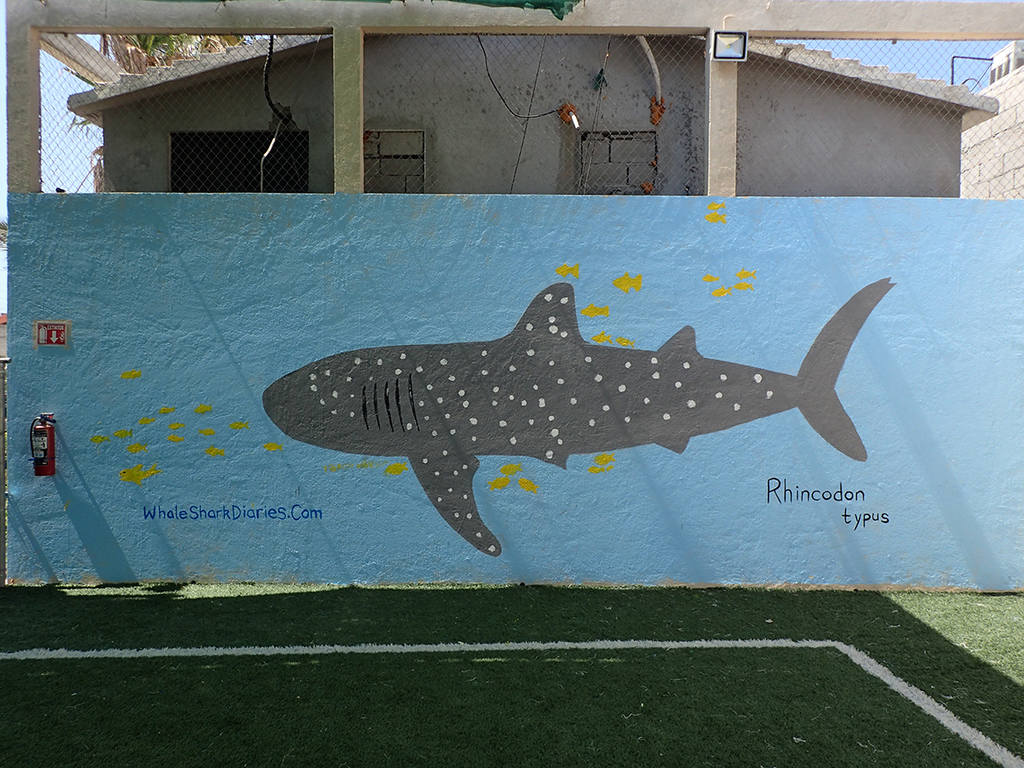
Whale shark mural that was painted by the children for World Oceans Day!
Our project in Mexico: Raising awareness about whale sharks through school presentations and activities
In collaboration with Montessori Del Cabo, Ocean Sanctuaries, Dive O’Clock and World Oceans Day Jay Gittens organized various school presentations and activities for local children in La Paz, Mexico.The project was a great success and especially the instant results were amazing! Read all about it here: “The future belongs to the children” . Please share this post to raise awareness for responsible whale shark tourism!
If you like this post, hit that like button on our Facebook page and stay tuned for more!
Marlies Wolters
Founder of Dive O'Clock "It's dive o'clock somewhere!"
Founder of Dive O'Clock "It's dive o'clock somewhere!"

Continue reading
Share this page:








